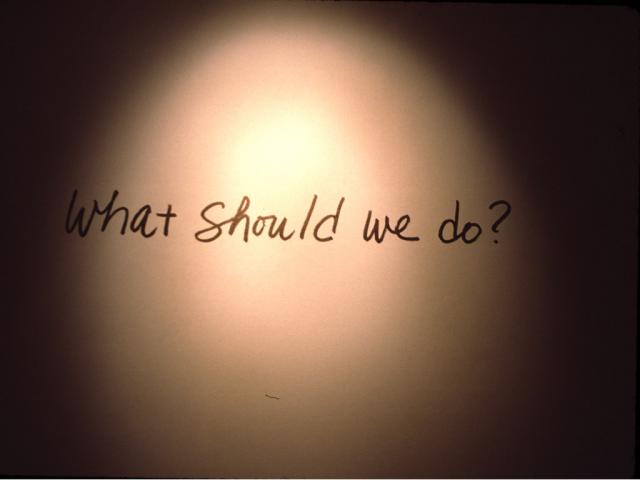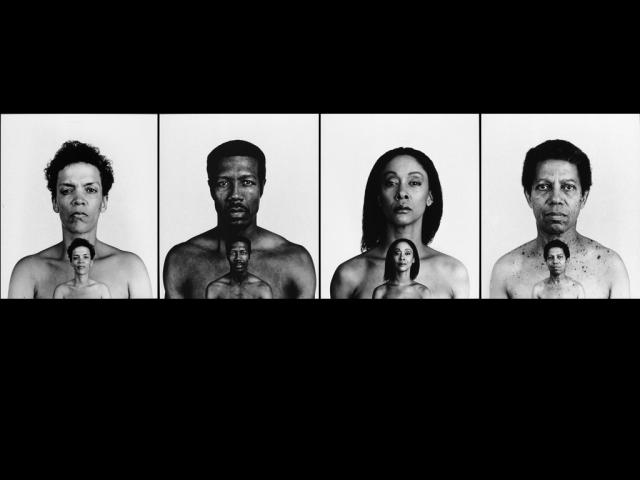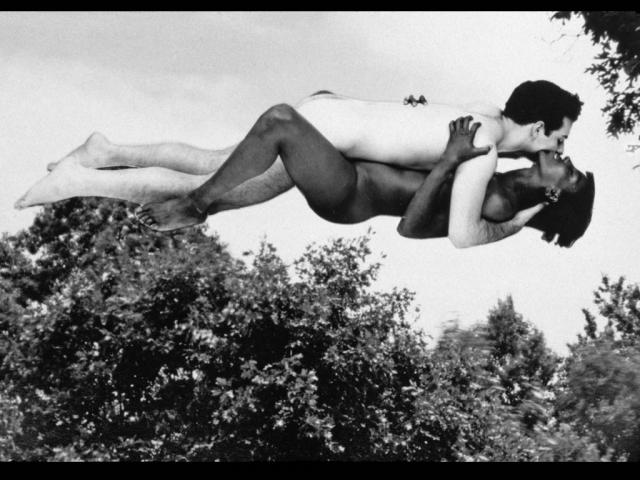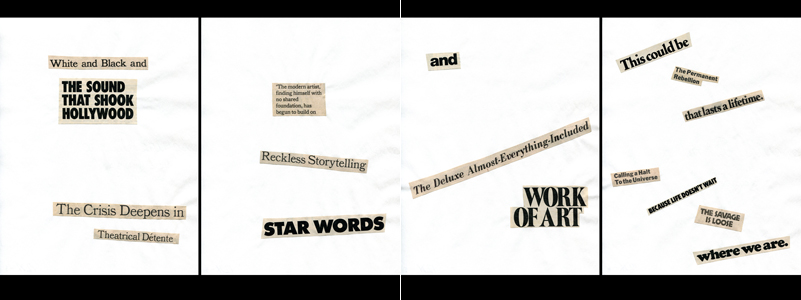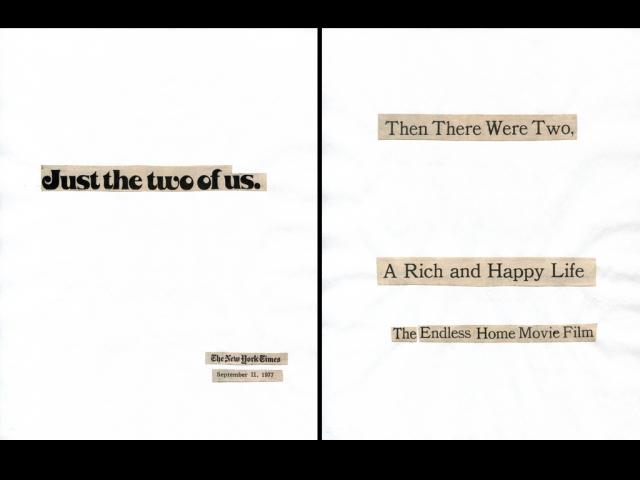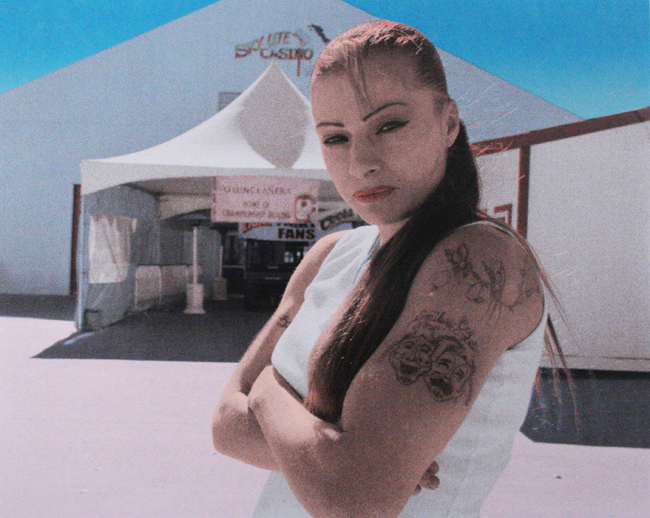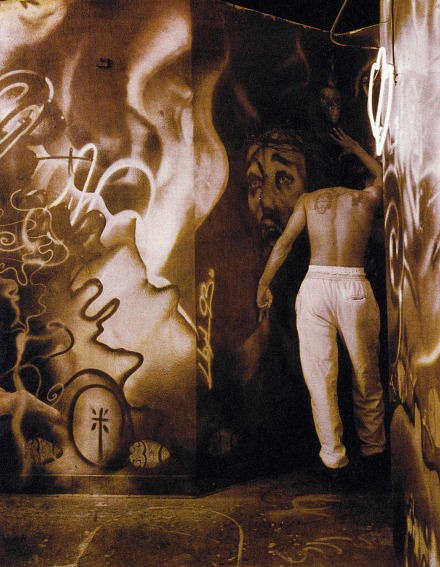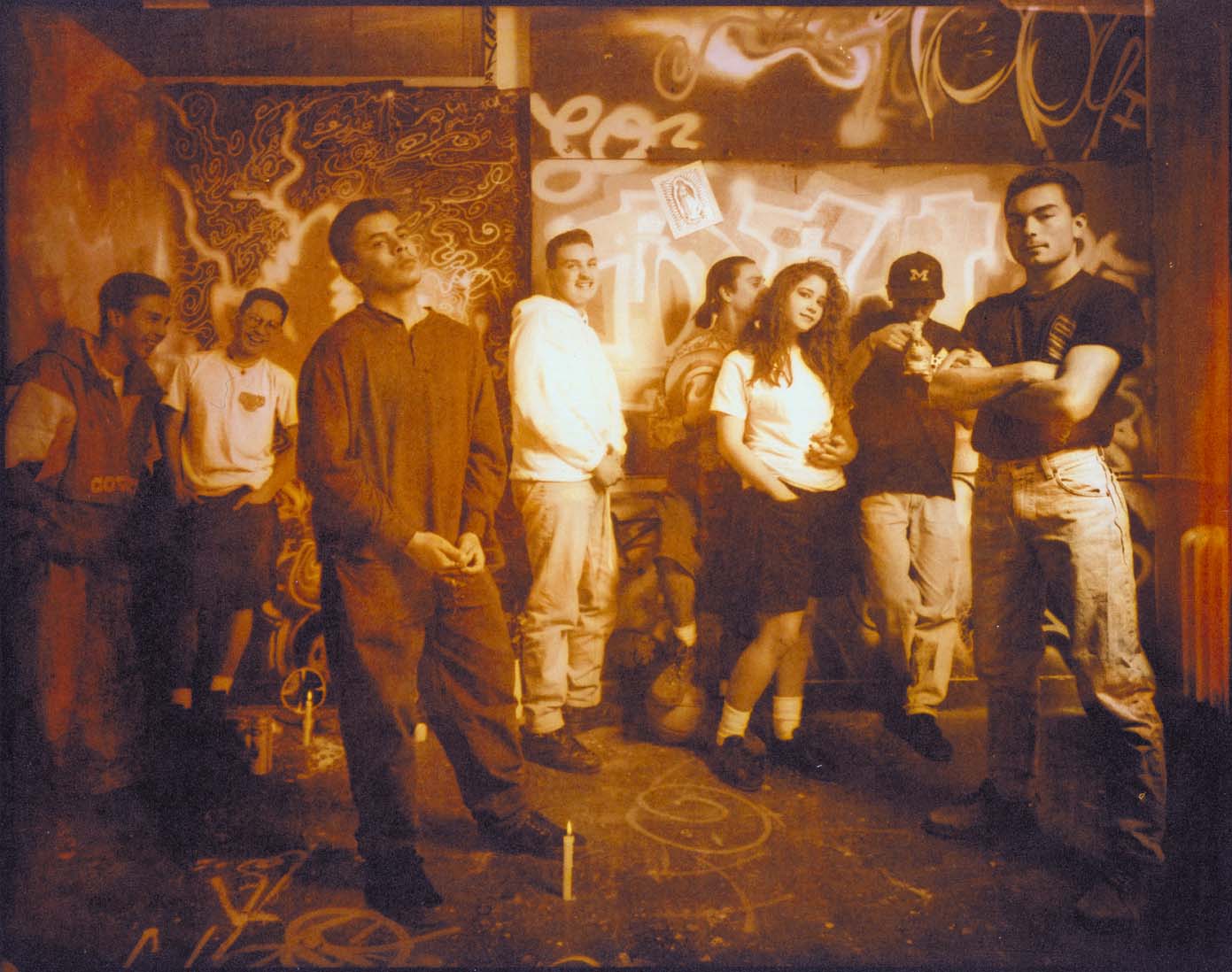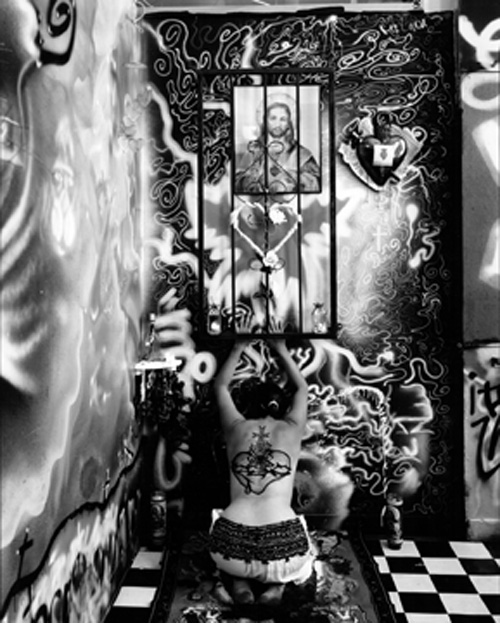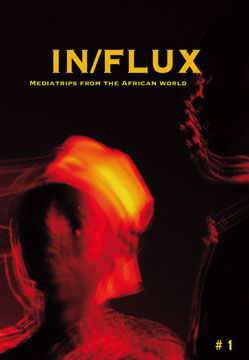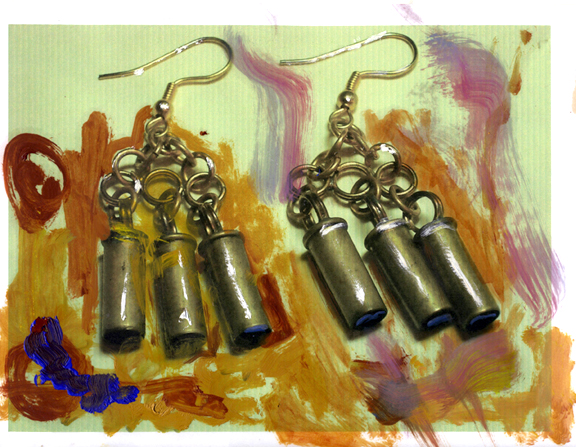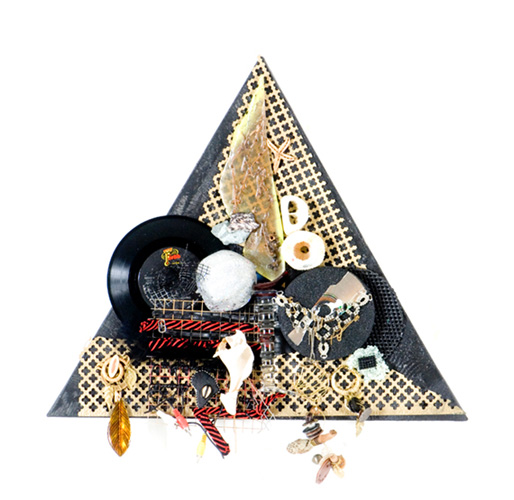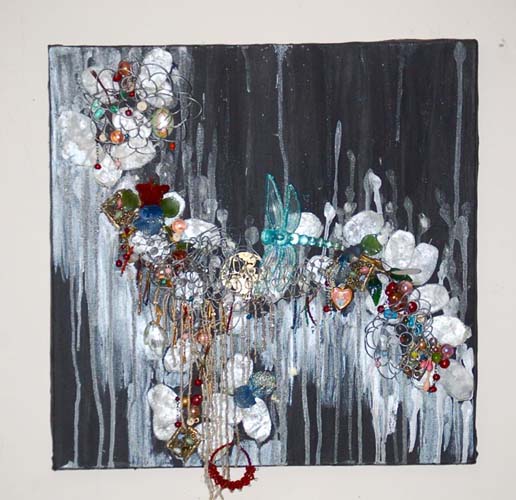Guinevere (Gen) Doy
Gen Doy”s art encompasses drawing, photography, video, painting, installation and sound recording. She is also the author of books dealing with issues of “race”, gender, sexuality and the politics of representation.
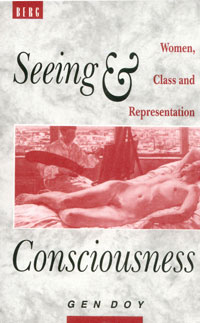 Doy, Gen (1995). Seeing and Consciousness: Women, Class and Representation. Berg Publishers, Oxford and Washington D.C. 205pp, 54 black and white illustrations.
Doy, Gen (1995). Seeing and Consciousness: Women, Class and Representation. Berg Publishers, Oxford and Washington D.C. 205pp, 54 black and white illustrations.
"My research continues to interrogate the relationship of gender, “race”, class and sexuality to visual culture." - Gen Doy
Selected Works:
Roots [ Video ]
A sound and still-image piece exploring various connotations of roots - as vegetables, magic and sexual potions, buried objects, food, cultural symbols, and erotic objects buried, dormant or growing. Historical and classical texts are collaged with more contemporary material.
The Works
Doy works with still and moving images, written and spoken texts, in order to construct narratives that are not linear, but suggestive, evocative, and open to creative interpretation by the viewer and listener. She is interested in myth, history and the many ways in which the historical can collide and interact with the contemporary. She has recently been working on ways in which her work can give a voice to, and make visible, people and things who have been ignored, marginalised, or simply not seen. The voice as an art medium has now become increasingly important in her work, and she attempts to convey something of its sensual and seductive potential. Her future projects will engage with the relationship of images to sound and text in an increasingly creative manner. However sometimes she prefers the voice(s) to stand alone.
Books
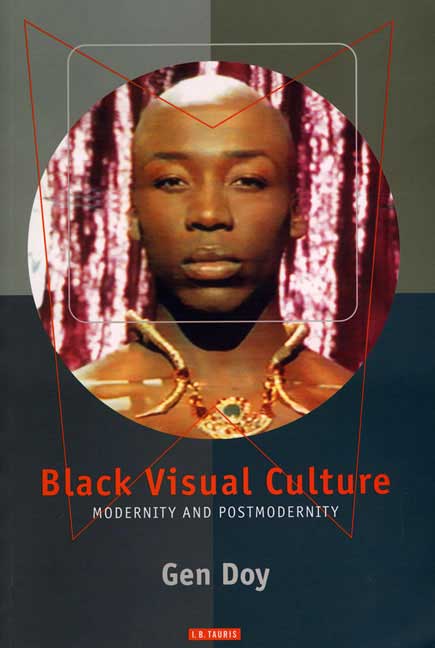 Black Visual Culture: Modernity and Post-Modernity
Black Visual Culture: Modernity and Post-Modernity
Black Visual Culture presents a critical introduction to the work of contemporary black American and British artists, including Chris Ofili, Isaac Julien, Keith Piper, Rasheed Areen, Robert Mapplethorpe, Roshini Kempadoo, and Anish Kapoor. The central aim of the book is to show how black artists have been and continue to be influenced by the politics, cultures, societies, economies and histories in which they live and work. Using illustrated case studies as introductions, the book goes on to discuss and critique the key debates around modernism and post-modernism, as well as the major issues, literature and theory around black photography and art. One important element is its discussion of cultural criticism of the foremost writers in the field, such as Stuart Hall, Paul Gilroy, Kobena Mercer and Homi K. Bhaba.
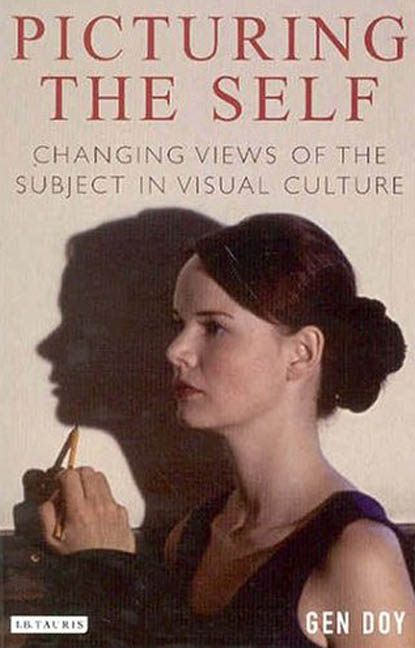 Picturing the Self: Changing Views of the Subject in Visual Culture
Picturing the Self: Changing Views of the Subject in Visual Culture
Ideas of selfhood, from Descartes to postmodern notions of the fragmented and de-centred self, have been crucial to the visual arts. Gen Doy explores this relationship, primarily in relation to contemporary art but also going back to the early modern period and Holbein's Ambassadors. She argues that the importance of subjectivity for art goes far beyond self-portraits, exploring the self and identity--both the artist's and the viewer's--and seeks a way of thinking the self that goes beyond both Cartesian and postmodern approaches to subjecthood. She looks too at work and consumption; self-presentation; photography and the theatre of the self; the marginalized--beggars and asylum seekers--and "the real me." A wide range of artists, including Claude Cahun, Tracey Emin, Jeff Wall, Barbara Kruger, Eugene Palmer and Karen Knorr are discussed, as well as historical material from earlier periods.
Guinevere (Gen) Doy - Emeritus Professor of History and Theory of Visual Culture, De Montfort University
Currently PhD Examiner at University of Gloucester; University of Birmingham; Royal Holloway College University of London; University of Wolverhampton; Dartington College of Art; and University of Wales
Research Groups: Fine Art Practices. Photographic Studies and Creative Imaging. Subject Area: History and Theory of Visual Culture
Biography
Doy’s creative work mobilises an extensive knowledge of art history and critical theory, and she has worked for many years in the field of visual culture, as a lecturer, writer, and curator. She has lectured at De Montfort University Leicester, The Open University, London College of Fashion, ICA London, Hayward Gallery, Ruskin College of Art, Birmingham University, Museum of Modern Art Bordeaux, The National Gallery London, The Peloponnesian Folklore Foundation Athens, and many other educational and artistic institutions.
As well as pursuing her own artistic practice, she has supervised and examined Ph.D. theses in fine art and photography, and in art history and visual culture studies.
In 2011, Doy completed a Postgraduate Diploma (with distinction) in Fine Art at Byam Shaw School of Art,/Central St. Martin’s London, where she continues to develop her work. She has also studied at the Slade School of Fine Art.
Andre S. Belcher - Contributor
 Friday, December 16, 2011 at 5:00AM
Friday, December 16, 2011 at 5:00AM 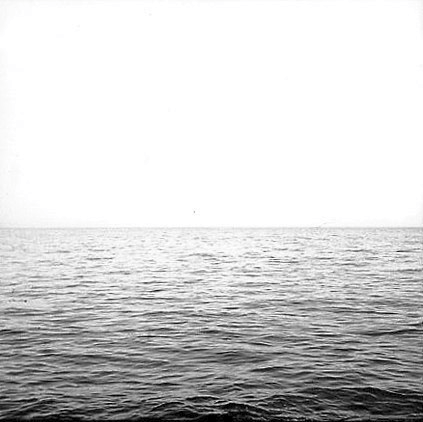 Twice Remembered #2 Lewis attended the Polytechnic of Central London (now University of Westminster) to study film and photography in the mid 1980s and later worked for the community based Blackfriars Photography Project in South East London.
Twice Remembered #2 Lewis attended the Polytechnic of Central London (now University of Westminster) to study film and photography in the mid 1980s and later worked for the community based Blackfriars Photography Project in South East London. Contact Sheet: 45's Singles Collection 2009
Contact Sheet: 45's Singles Collection 2009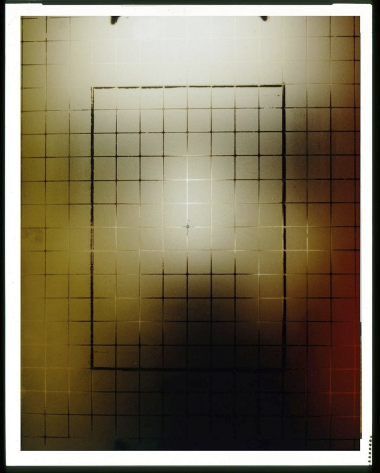 14 copy copy
14 copy copy PAPILLION ART
PAPILLION ART

